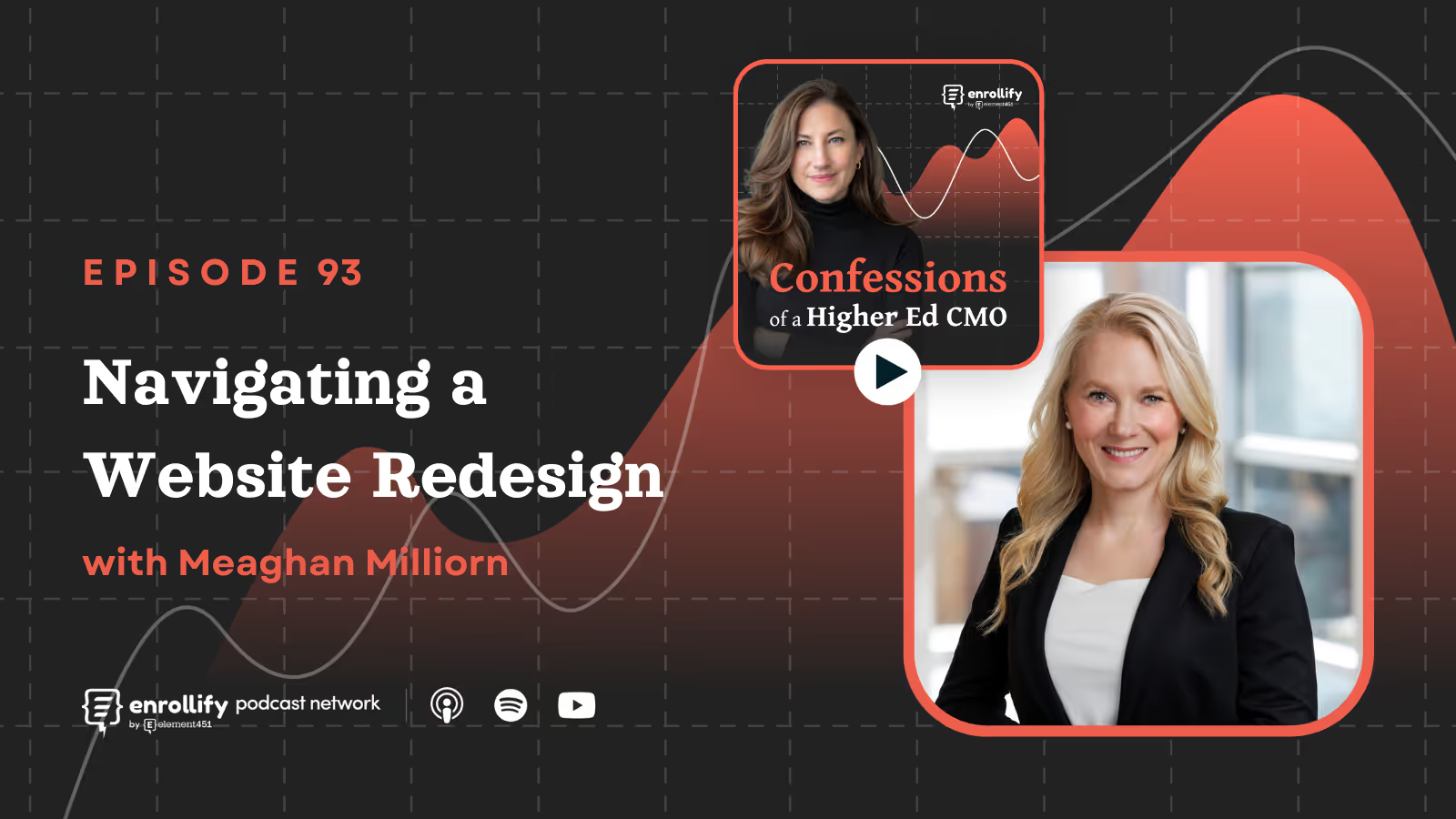About the Episode
In this episode, listeners will learn more about managing the MarComm budget. From building partnerships to taking advantage of one-time monies, Kate Ledger shares how to maximize the budget for MarComm efforts. Finally, she’ll debunk the notion that creatives can’t do budgets and share strategies to help learn this important part of the CMO role.
Key Takeaways
- Marketing Budgets Require Strategy
Tie budgets to measurable success metrics aligned with institutional goals like enrollment, fundraising, and research visibility. - Advocate for Marketing’s Value
Communicate marketing’s role in driving revenue and institutional outcomes with repetitive, clear messaging tied to metrics. - Collaboration is Key
Build relationships across departments and with procurement teams to align resources and create shared goals. - Embrace the Numbers
Step into budgeting with curiosity and confidence—financial fluency is essential for leadership success. - Experiment with One-Time Funds
Use surplus budgets to pilot tools or initiatives that demonstrate marketing’s impact and scalability.
Why Are Marketing Budgets Crucial in Higher Education?
Kate highlights that traditional higher ed budgets often overlook marketing, requiring leaders to carve out distinct budgets for campaigns, tools, and talent. By tying marketing investment directly to strategic institutional goals—like enrollment and fundraising—leaders can demonstrate its value.
How Can New Marketing Leaders Navigate Budgeting?
- Start with Curiosity: Understand existing budget structures and processes by asking questions without making assumptions.
- Build Relationships: Foster collaboration with procurement and finance teams to align goals and resources.
- Be Strategic: Reallocate outdated budget allocations (e.g., print advertising) to modern tools like digital campaigns and CRM systems.
How Do You Advocate for Marketing’s Role?
- Tie to Revenue: Show how marketing impacts measurable outcomes like enrollment and donations.
- Communicate Repeatedly: Continuously share marketing’s successes, connecting them to institutional goals.
- Highlight Partnerships: Demonstrate how marketing amplifies outcomes for academic units and other institutional departments.
What Are the Best Uses of One-Time Funds?
- Experimentation: Pilot tools like branded AI solutions or test advertising strategies to prove value.
- Strategic Initiatives: Support specific programs with measurable enrollment or fundraising goals.
- Infrastructure: Invest in long-term tools like CRM or project management software to enhance team productivity.
How Can Leaders Build a Stronger Budget Process?
- Involve Teams: Encourage team members to create proposals and track ROI for their requests to build fiscal responsibility.
- Create Shared Resources: Develop grant-style funding to empower academic units while retaining centralized expertise.
- Use Data: Measure and report success metrics to build credibility and secure future funding.















